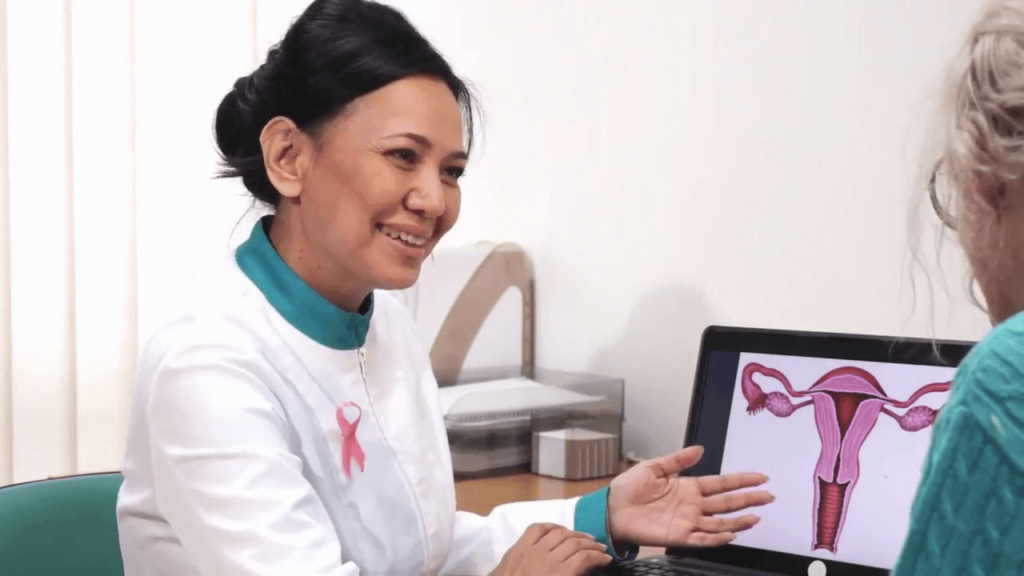Gynecological Health Screening: An Essential Guide for Women’s Well-being
Introduction
Gynecological health is a critical aspect of overall wellness for women, encompassing a range of issues from reproductive health to the early detection of diseases. Regular gynecological health screenings play a vital role in maintaining a woman’s health, detecting potential problems before they become serious, and providing an opportunity to discuss any concerns with a healthcare professional. This article explores the importance of gynecological health screenings, the types of screenings available, and the recommended frequency for different age groups.
Why Gynecological Health Screenings Matter
Gynecological health screenings are designed to detect conditions that may not present symptoms until they are advanced, such as cervical cancer, sexually transmitted infections (STIs), and other reproductive system-related issues. Early detection through screening can lead to more effective treatment, better outcomes, and, in many cases, a complete cure.
For example, cervical cancer, once a leading cause of cancer deaths among women, has seen a significant decline in incidence and mortality rates due to widespread screening programs. The Pap smear, a test that detects abnormal cells in the cervix, has been instrumental in identifying pre-cancerous conditions, allowing for early intervention and prevention of cancer development.
Additionally, gynecological screenings provide a platform for women to discuss reproductive health issues, including menstrual irregularities, contraception, fertility concerns, and menopause. These consultations can help women make informed decisions about their health and well-being

Types of Gynecological Health Screenings
Several types of gynecological screenings are available, each targeting specific aspects of women’s health. Below are the most common types of screenings:
- Pap Smear (Pap Test)
- The Pap smear is a screening procedure for cervical cancer. It involves collecting cells from the cervix to look for abnormalities that may indicate cancer or pre-cancer. Women aged 21 to 65 are generally advised to undergo a Pap smear every three years, although the frequency may vary depending on individual risk factors and the results of previous tests.
- Human Papillomavirus (HPV) Testing
- HPV testing is often conducted alongside the Pap smear. HPV is a common sexually transmitted infection that can lead to cervical cancer. Women over 30 are typically recommended to have both the Pap test and HPV test every five years. HPV testing can also be performed independently to assess the risk of cervical cancer.
- Pelvic Examination
- A pelvic exam is a routine procedure where a healthcare provider examines the reproductive organs, including the vulva, vagina, cervix, uterus, and ovaries, for any abnormalities. Pelvic exams are often performed as part of an annual check-up and may be recommended more frequently if a woman has symptoms such as unusual discharge, pain, or menstrual irregularities.
- Breast Examination
- Clinical breast exams are conducted to check for lumps or other changes in breast tissue that may indicate breast cancer. While mammograms are the gold standard for breast cancer screening, a breast exam by a healthcare provider is an essential component of a gynecological check-up.
- Mammography
- Mammography is an X-ray imaging technique used to detect breast cancer. It is recommended annually or biennially for women aged 40 and older, though the specific guidelines may vary depending on individual risk factors. Early detection through mammography can significantly improve the prognosis of breast cancer.
- Sexually Transmitted Infection (STI) Screening
- STI screening is crucial for sexually active women, particularly those with multiple partners. Tests can screen for a range of infections, including chlamydia, gonorrhea, syphilis, HIV, and others. Regular screening helps prevent the spread of infections and reduces the risk of complications such as infertility.
- Bone Density Testing (DEXA Scan)
- While not exclusively a gynecological test, bone density testing is often recommended for postmenopausal women to assess the risk of osteoporosis. The test measures the density of bones, typically in the hip and spine, and helps determine the need for preventive measures or treatment to prevent fractures.
- Hormonal Testing
- Hormonal testing may be recommended for women experiencing symptoms of hormonal imbalance, such as irregular periods, excessive hair growth, or severe acne. These tests can help diagnose conditions like polycystic ovary syndrome (PCOS), thyroid disorders, and menopause.

Recommended Frequency of Screenings
The frequency of gynecological screenings varies depending on a woman’s age, medical history, and risk factors. Below is a general guide:
- Women in Their 20s
- Pap Smear: Every three years starting at age 21.
- HPV Test: Not typically recommended unless there is an abnormal Pap smear result.
- Pelvic Exam: Annually, or as recommended by a healthcare provider.
- STI Screening: Annually for sexually active women, or more frequently depending on risk factors.
- Women in Their 30s
- Pap Smear and HPV Test: Every five years if both tests are combined, or Pap smear every three years if done alone.
- Pelvic Exam: Annually, or as recommended.
- STI Screening: As needed, based on sexual activity and risk factors.
- Women in Their 40s
- Pap Smear and HPV Test: Continue as in the 30s, unless directed otherwise by a healthcare provider.
- Pelvic Exam: Annually, or as recommended.
- Mammography: Annually or biennially, starting at age 40.
- STI Screening: As needed.
- Women in Their 50s and Beyond
- Pap Smear and HPV Test: Every five years or as recommended until age 65. After 65, screening may be discontinued if previous tests have been normal.
- Pelvic Exam: Annually, or as recommended.
- Mammography: Annually or biennially.
- Bone Density Test: Once at menopause, then every two years if indicated.
- STI Screening: As needed.
Special Considerations
Some women may require more frequent or additional screenings based on their medical history, family history, or lifestyle factors. For instance:
- Women with a Family History of Cancer: Those with a family history of breast or ovarian cancer may need earlier and more frequent screenings, including genetic testing for BRCA mutations.
- Women with High-Risk HPV Strains: Those who test positive for high-risk HPV strains may need more frequent Pap smears and closer monitoring.
- Postmenopausal Women: Women who have gone through menopause but have a history of reproductive health issues or are on hormone replacement therapy may need ongoing screenings.
- Women with Chronic Health Conditions: Conditions like diabetes or autoimmune diseases can increase the risk of gynecological issues, necessitating more vigilant screening.
Conclusion
Gynecological health screenings are a cornerstone of preventive healthcare for women. By adhering to recommended screening schedules, women can significantly reduce their risk of serious health issues, including cancers and infections. These screenings also provide an invaluable opportunity for women to engage in conversations with their healthcare providers about their reproductive health, sexual health, and overall well-being.
Regular screenings, combined with a healthy lifestyle and open communication with healthcare providers, empower women to take charge of their health and ensure a higher quality of life. Whether in their 20s, 30s, or beyond, women should prioritize these screenings as part of their regular healthcare routine, making them an essential aspect of lifelong wellness.







